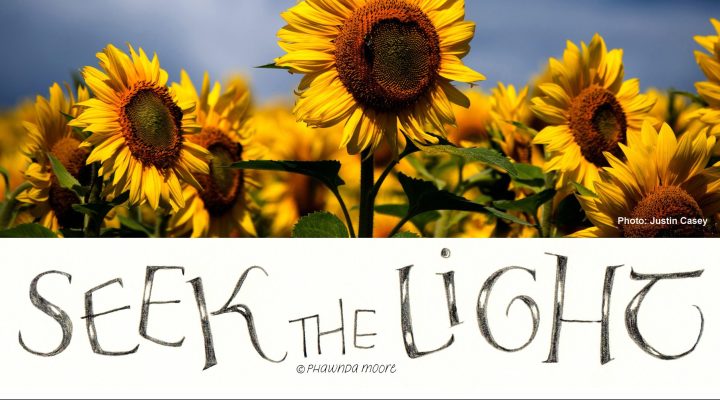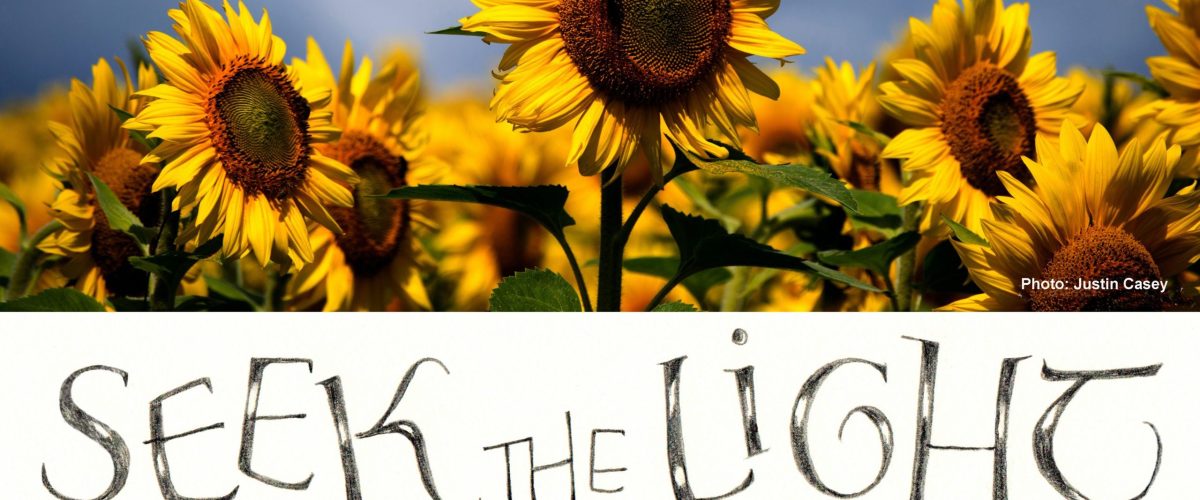In the early morning, I watch their golden faces from my kitchen window. Often, I whisper a prayer for those in Ukraine. It’s hard to believe it’s been almost six months.
“Keep your face to the sunshine and you cannot see the shadows. It’s what the sunflowers do,” said Helen Mirren.
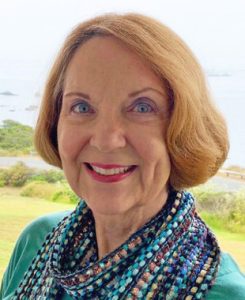
Phawnda Moore
Sunflowers, midsummer’s showy garden optimists, model faith and hope as they follow the light. We’ve seen a lot about them lately in world news; their beaming blooms are everywhere.
Their yellow color symbolizes vitality, friendship, intelligence and happiness. The speckled seeds grow around the world from one to 16 feet tall. (Note that the world record, however, is a mighty 30 feet!) You can see some of the gorgeous varieties here.
Sunflowers (Helianthus: Greek helios meaning sun and anthus, meaning flower) have been with us since Greek mythology. In Native American culture, late summer festivals celebrate the earthly bounty of seeds and pigment. The Native Americans also used the juice in the stems to treat wounds and infused the plant in water to treat kidney ailments and chest pains.
Today sunflowers are grown commercially for cooking oil, seeds and beauty products. The benefits include improved heart health and lower cholesterol. The oil is also a safe, inexpensive conditioner for skin and hair.
Sunflowers produce a huge amount of pollen and nectar, which boosts the immune system of bumblebees and honeybees. They’re a popular choice for weddings and funerals and have found their way into numerous activists’ political and environmental protests.
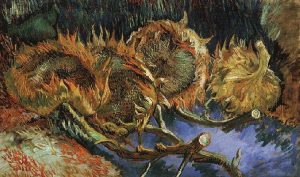
One could step back and marvel at the influence and power of a sunflower.
From North America, the sunflower made its way to Ukraine, became its national flower, and is a worldwide symbol of support for Ukraine and its resistance against Russian aggression.
In London, barricades in front of the Russian embassy have become a place for the public to place sunflowers supporting Ukraine.
The Toronto Star reported: “In 1996 at a missile base in southern Ukraine, there was a ceremony marking the successful effort to gather all ex-Soviet nuclear weapons and avoid further proliferation. Officials planted sunflower seedlings on a former missile silo, launching the sunflower to stardom. As a U.S. official said, ‘It is altogether fitting that we plant sunflowers here at Pervomaysk to symbolize the hope we all feel at seeing the sun shine through again.’”
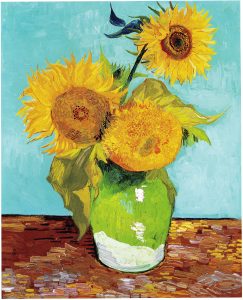 Centuries ago, Vincent Van Gogh was drawn to their vibrant color and form for his paintings. Nienke Bakker, curator of the Van Gogh Museum in Amsterdam, explains: “The sunflower is a very strong and sturdy plant. It’s not elegant and refined. He called it the ‘rustic sunflower.’ It has the roughness and unpolishedness of the real countryside, and that’s what he felt strongly about.”
Centuries ago, Vincent Van Gogh was drawn to their vibrant color and form for his paintings. Nienke Bakker, curator of the Van Gogh Museum in Amsterdam, explains: “The sunflower is a very strong and sturdy plant. It’s not elegant and refined. He called it the ‘rustic sunflower.’ It has the roughness and unpolishedness of the real countryside, and that’s what he felt strongly about.”
Van Gogh had grown up in the rural Netherlands and painted the flowers from memory when he was in an asylum.
They became “something almost sacred, a symbol that represented light itself, an ideal of an honest life lived in nature,” according to Tess Thackara.
“His paintings, (Van Gogh) wrote to his sister in 1890, were ‘almost a cry of anguish while symbolizing gratitude in the rustic sunflower,’ an image that brought him comfort and familiarity, and which, one can imagine, had a certain vital glow and form that could raise his spirits in troubled times.”
The museum site has more of Van Gogh’s life and art, as well as resources for children.
Vincent Van Gogh once wrote in a letter to his brother Theo: “Nothing but sorrow comes out of war… there is only destruction.” The situation in Ukraine is currently absolutely desperate — but hopefully the sunflowers which so inspired the artist will eventually become a symbol of peace and reconstruction.
These unassuming life teachers show us to bow down, seek the light, rest and hope, especially in troubled times.
Right now, across the U.S., you can visit sunflower fields before they fade into fall. Make it an afternoon outing or a short road trip to see fields of sunflowers in their golden glory, symbols of peace and love.
Phawnda Moore is a Northern California artist and award-winning author of Lettering from A to Z: 12 Styles & Awesome Projects for a Creative Life. In living a creative life, she shares spiritual insights from traveling, gardening and cooking. Find her on Facebook at Calligraphy & Design by Phawnda and on Instagram at phawnda.moore.
Related articles:
Subterranean hope in Ukraine | Opinion by Bob Ellis
I decided to make a list: 20 actions to cultivate hope | Opinion by Mary Hix

